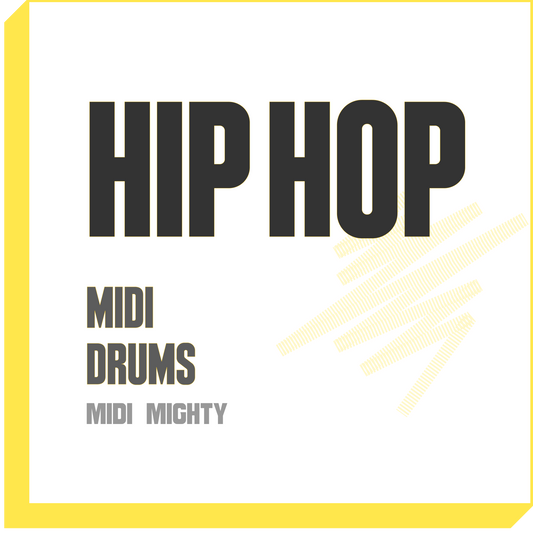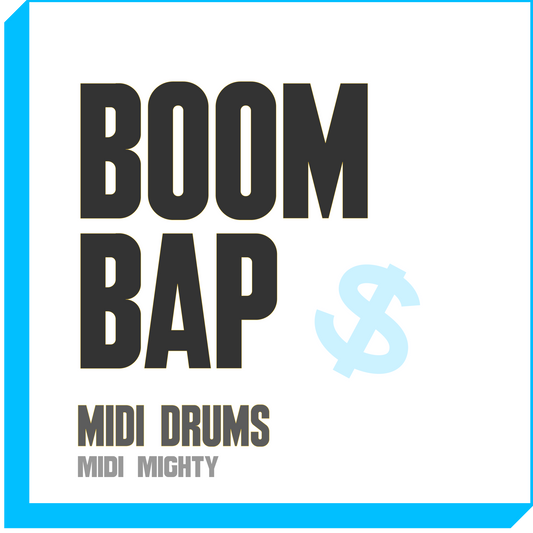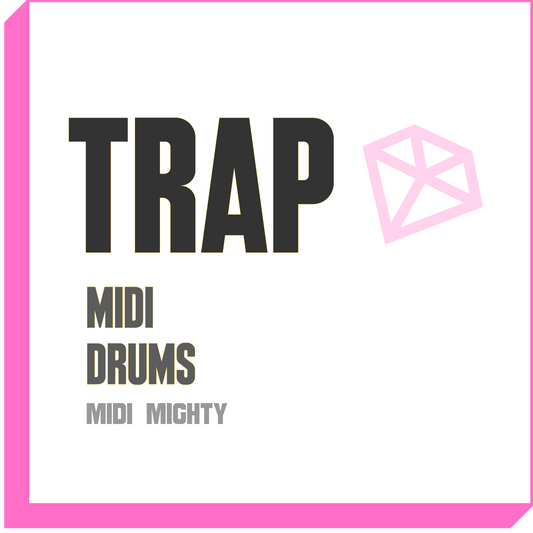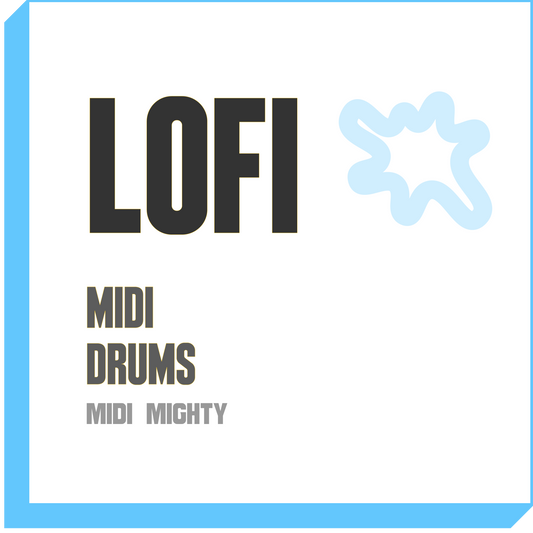Step 1: Make a beat you like
Step 2: Opening up a reverb plugin
Step 3: Applying your favorite reverb preset
Step 4: Feel like the greatest music producer
Putting the right preset from reverb plugin is a goated feeling. It takes what already sounds good and makes it so much better.
Reverb plugins have come a long way over the years in taking your production to the next level.
But what is reverb, what's it do, how should you apply it, what are the best reverb plugins, etc. etc.
We cover it here, the complete guide to reverb and reverb plugins.
Table of Contents
Reverb Overview
Reverb Plugin Concepts
Applying Reverb
Reverb Plugins
What Is Reverb
Reverb is short for reverberation. It's the natural reflection of sound waves off surfaces in an environment. When a sound is produced, it doesn't only travel directly to your ears. It bounces around everything around it - walls, ceilings, floors, and pretty much any object in it's environment. This creates a dense series of reflected sound that arrive at a slightly different times and amplitudes.
In music production, reverb plugins add effects that simulate these reflections to recreate the feeling of being in a real acoustic space.
It's used to make your sounds more natural and real (and less flat and fake).
Why Use Reverb In Music Production
Reverb in music production is used to make your sounds sound more real and authentic. Without reverb sounds can be flat and fake.
Reverb plugins emulate the environment - whether that's a small room, big room, etc to make your sounds as if they were in that room.
The benefits of using a reverb plugin in music production are:
Adds Depth And Space
Reverb makes a track sound like it exists in a physical space instead of a vacuum. It helps create a 3d sound stage, pushing some elements back and bringing others forward.
Creates Cohesion
Applying reverb across multiple elements can glue them together, making them sound like they belong int he same environment
Enhances Emotion & Atmosphere
A lush hall reverb might make a vocal feel grand and emotional. A short room reverb can add intimacy.
Smooths Transients
Reverb can soften harsh sounds and smooth out performances, especially on vocals or drums.
Creative Texture
When used heavily or in unconventional ways (such as gated reverb, or reverse reverb), it becomes stylistic and can create interesting atmospheric effects. This adds another layer of feel or texture to your music.
Considerations When Using Reverb
Reverb is great and makes many things sound better. But like with everything, use reverb with caution.
The main thing you want to be concerned about is loss of clarity. Too much reverb muddies the mix and reduces clarity specifically around vocals.
A couple unintended effects can happen as well. Important frequencies can be buried or smeared.
Lastly, it can prove difficult to mix. Too dry and the mix feels flat, too wet and it loses it focus.
Reverb Plugins Typical Controls
Most reverb plugins share similar controls (albeit different models/algorithms underneath).
Here's a list of common controls you'll find in reverb plugins along with what it does and why it matters.
| Control | What It Does | Why It Matters |
| Pre-delay | Time (ms) between dry signal and the start of the reverb tail. |
Adds clarity, preserves transients |
| Decay | How long the reverb lasts (in seconds) | Controls the sense of space. |
| Size | Simulated size of the space | Bigger space means more reflections and tail. |
| Mix / Wet/Dry | Balances the original (dry) and reverbed (wet) signal | Controls how much of the reverb is applied |
| Damping | High/low frequency roll off inside the reverb | Simulates absorption in real-world materials. |
| Diffusion | Controls how smooth or reflective the space fees. |
High is smooth, low is fluttery echoes. |
| EQ (pre/post) | Filters before and after the reverb. | Shape the sound of the reverb tail. |
| Modulation | Adds chorus-like movement to the tail. | Adds lushness or vintage vibe. |
| Early Reflections | First short echoes, help define space/position. | Adds realism and directionality. |
| Width/Stereo | Spreads reverb across a stereo field. | Wide = ambient. Narrow = focused. |
| Input Gain | Controls level going into the reverb. | Affects how intense the reverb is. |
| Output Gain | Controls final level of reverberated signal. | Prevents volume spikes. |
| Attack | How quickly the reverb becomes audible after the dry sound starts. Similar to pre-delay | Often shapes the ramp-in of the wet signal volume. |
| Distance | Simulates how far the sound source is from the listener or microphone | Shapes the character, from intimate (closer) to atmospheric (farther). |
| Density | Controls how tightly packed the echoes are in the reverb tail | shapes the character of the sound |

Common Type of Reverb Found in Reverb Plugins
You may think reverb is simply and on/off switch and maybe a slider of how much you want applied. Nope.
There's all sorts of reverb types.
Here's common types of reverb found in most reverb plugins.
| Type | Description | Sound | Use |
| Room | Simulates small spaces like bedrooms, studios, or small venues | Short and tight reflections | Adds subtle realism to vocals, drums, or instruments without overwhelming the mix |
| Hall | Models large concert halls or orchestral spaces | Long decay, lush, expansive. Spacious, deep. | Great for ballads, orchestral music, ambient styles, emotional vocals |
| Plate | Simulates vibrations through a metal plate (as opposed to simulating a real world space). | smooth, dense, warm, bright top-end, fast-decay | Classic for vocals (especially vintage or soul), snares, guitars. Used heavily in the 60s and 70s |
| Spring | Uses actual springs (often in guitar amps) to create reflections | Metallic, boingy, vintage | Surf rock, reggae, lo-fi, guitar amps. Retro-vibes. Has a unique character; not representative of a natural space like a hall or a room. |
| Chamber | Emulates an acoustic room specifically built for reverb (used in studios) | Smooth, organic, medium-length | Studio vocals, pop production. Adds natural depth without excessive decay. |
| Convolution | Uses real recordings of physical spaces | very realistic - captures the specific fingerprint of a real place | Film scoring, orchestral work, authentic spatial effects |

Tips for Using Reverb Effectively
Here's some tips to get the most out of using reverb. Two categories here: practical tips, and creative tips.
Practical Tips
A few practical tips for using reverb plugins successfully in your music production:
Use Pre-Delay To Shape
This adds clarity by separating the dry signal from the wet tail.
EQ After Reverb
This remove mud and tames highs from reverb tails. Overall helps keep your mix clean. Use a high pass filter and optionally low-pass on your reverb return (bus/aux)
Send/Return Instead of Insert
Use and aux bus for reverb to control blend and apply EQ as well as to share one reverb to many tracks.
Automate Reverb Sends
This can add emotional impact or space in specific moments like at the end of a line or when a chorus drops.
Use Different Reverbs for Depth
Blend multiple types of reverb to create rich, layered spaces. A short room on drums, a medium plate on vocals, and a long hall on pads can help each element find space.
Creative Tips
Distorted or Saturated Reverb
This will add grit, warmth, and retro character. Put a tape saturator, overdrive, or amp after the reverb on the send.
Gated Reverb
This make reverb sound snappy or punchy. Can be iconic on snares. Use a long reverb and gate (or transient shaper) to cut off tail abruptly. Used in 80s drums and dark RnB.
Reverse Reverb
Build tension and create a dramatic lead into key phrases.
Reverb Into Delay
This will add space before echoes and is useful for ambient or washy textures. Add reverb and then, add delay.
Reverb By Genre
Depending on the genre, you'll want to apply your reverb in specific ways. Let's look at how you can apply reverb by genre.
Hip Hop
In most of hip hop, the beat shouldn't be too complex so the rapper's vocals can shine. When it comes to reverb, it's the same concept. We want to
- maintain vocal clarity and punch.
- Add space without muddying the groove
- Use creative reverbs for ad-libs, transitions and atmosphere.
Reverb Tips for HipHop
Short Plate or Room on Vocals: Subtle tail with a bit of pre-delay (about 20ms) to avoid cluttering.
Gated or Dubby Spring on Ad-Libs: Ad-libs get exxaggerated FX to stand out
Reverb Automation on Words/Phrases: Emphasize key phrases by automatng a burst of reverb.
Things To Try
- Vocal delays with reverb on the return to get a ambient slapback echo.
- Short spring on percussion loops with a subtle pre-delay.
- Hall or chamber with high-passed reverb on synth leads.
Trap
Trap tends to be hard hitting with bounce with clean trap drums. The goal with reverb here is to:
- Retain punch and clarity (especially for 808s and drums).
- Use reverb for texture while avoiding any sense of muddiness.
- Add a cinematic atmosphere.
Reverb Tips for Trap
Use reverb on high percussion (hi-hats, risers). Add shimmer with a bright room or plate.
Sparse Hall Reverb on Pads/Synths: Huge tails create a cinematic vibe without crowding fast rhythms.
Reverse reverb on Transitions: for beat drops or vocal transitions this can create a nice build-up..
Things To Try
- Vocal ad-libs: Use spacey hall reverb with a heavy high-pass.
- Snare or rim: Use a gated or metaliic spring style reverb
- Ambient pads: Use a long decay hall with ow cut.
LoFi
LoFi is a fun genre to produce for since it's emulating sounds back in the day with modern technology. Plenty of room to be creative especially with reverb. Here's the overall goals with reverb in LoFi:
- Dreamy, nostalgic texture
- warmth and imperfection
- Spacey but intimate
Reverb Tips for LoFi
- Long plate or Hall on everything (drums, keys vocal) to create a washy, cohesive sound.
- Low-passed reverb for muffled ambience. This helps get the vintage and vinyl-like feel. Great for LoFi drums
- Reverse reverb for ethereal moments. This works great on piano hits or vocal chops.
Things To Try
- Drums: Subtle spring or room with reverb printed to audio.
- Piano/Keys: drench them in hall reverb along with tape wobble.
- Ambient Textures: convolution reverb with old rooms or cassette decks.
Country
Country music leans way more naturalistic. Think more outdoors and nature, and less drum machines. In country we want:
- naturalism and storytelling.
- Space that mimics real performance venues (small rooms, studios).
- Vocal intimacy with guitar warmth.
Reverb Tips for HipHop
Chamber or Room Reverb on Vocals. Goal is to get smooth and earthy here, and no overly synthetics tails.
Spring on Acoustic Guitar. This gives the classic country sound from vintage amps.
Hall reverb on Steel Guitar or Fiddle. Not too much here.
Things To Try
- Vocals: Short chamber with a bit of roll-off on top.
- Slide guitar: Long reverb tail for emotional effect.
- Snare: small room to mimic live playing
POP
Pop music is the most polished music as it appeals to the masses. In pop we want:
- Clean, polished, immersive sound.
- Emotional connection.
- Contrast between dry and wet moments.
Reverb Tips for Pop
Large Plate or Chamber on Vocals: This creates a smooth and natural feel with a hint of sparkle
Automate for Chorus Lift: Keep verses tight, bring in more reverb during choruses.
Pre-delay for Vocal Clarity: helps minimize smearing in the tail
Things To Try
- Main vocals: Plate reverb with about 30ms pre-delay and gentle high-shelf boost.
- Claps and snaps: tight room reverb for rhythm.
- Synths: Sidechain reverb tail to the kick for a pulsing effect.
And of course, make sure you have some great POP drum patterns to apply the reverb to.
Reggaeton
Reggaeton is a vibe and generally upbeat party music. With reverb we want to:
- Maintain the groove and rhythm, particularly with the percussion
- Add space without muddying the beat
- Help create a danceable, party, tropical vibe.
Reverb Tips for Reggaeton
Spring or Plate on percussion: use short, bouncy reverb on snares or claves.
Chamber on vocals: Keeps them lush but still direct and rhythmically tight
Panning combined with Reverb for FX hits: add a wide reverb to atmospheric FX and pan for movement
Things To Try
- Vocal delays with reverb on the return to get a ambient slapback echo.
- Percussion loops: short spring with a subtle pre-delay.
- Synth leads: hall or chamber with high-passed reverb.
Here's a wide range of reggaeton drum patterns.
R&B
RnB is about vibe and emotion and reverb helps deliver. With a reverb plugin for RnB we want to:
- Create a smooth and lush space that hugs the vocals.
- Add depth but maintain the intimate feel of RnB.
- Glue sounds together.
Reverb Tips for RnB
Natural plates or rooms if you're going for a more classic RnB feel (D'angelo for example). Modern RnB leans into the lush and ambient reverbs (SZA, dvsn, for example).
Plate of Hall reverbs on vocals.
Room or Plate on RnB Drums, with a short tight reverb on the snares.
Things To Try
- Vocals: use reverb to create emotional space without washing out clarity.
- Drums: snaps or claps can take a tight plate for width and smoothness. Avoid long decays (unless going for a specific ambience).
- Keys/pads: use a lush shimmer to add depth and width while keeping the sound soft.
Reverb Plugins
Ok so now that you know all about reverb, let's dive into some of the best reverb plugins out there:
Valhalla Vintage Verb
This is my personal favorite. It's known for it's deep tone-shaping, musical character, super simple interface and unbeatable value. It's great for getting creative but also getting a clean modern reverb with the option for vintage flavor.
It's best for: lush vocals, cinematic synths, creative FX, genre versatility.
Highlights: 1970s/80s/today modes; modulation; multiple algorithms (Hall, Plate, Room, etc).

FabFilter Pro-R 2
FabFilter gives you transparent, surgical control over decay per frequency band in a great UI. It's best for moder pop, film scoring, and mixing engineers who want precise reverb without artifacts.
Highlights: Decay rate EQ, Brightness slider, real-time display.
UAD Lexicon 224
Universal Audio delivers authentic emulation of legendary hardware units. It's best for vintage plate/chamber sounds for vocals, guitars, snares, and orchestral sounds.
Highlights: Beautiful tails, hardware richness, top-tier realism.
LiquidSonics Seventh Heaven
"M7 reverbs on speed deail" - LiquidSonics offers a convolution and fusion reverb based on the classic studio staple Bricasti M7. It's best for orchestral, film scores, acoustic, and natural reverb.
Hightlights: Beautiful stereo field, realistic depth, and the closest thing to a Bricasti M7 in plugin form.
Baby Audio Crystalline
I'm a fan of Baby Audio's products, Crystalline is no exception. It's a modern, clean, flexible reverb with the great UX Baby Audio is known for.
It's best for electronic, pop, trap, EDM, and lofi.
Highlights: Crystalline is synonymous with pristine. Reverse gate, ducking, shimmer, and clean algorithmic tail, Crystalline is great for modern vocals, synths, and FX tails.

Soundtoys Little Plate
A simple, vibey, classic EMT 140 plate feel in a compact plugin. Great for vocals, snares, guitars, and quick results.
Highlights: Warm tones, infinite decay switch, and low CPU usage.
Arturia Rev Plate-140 / Rev LX-24 / Rev Intensity
Authentic and modern hybrid reverbs with lush sounds and tone. Great for vintage pop, lo-fi, synthwave, and indie.
Highlights: Warm analog tone, blendable modern controls.
Eventide Blackhole / SP2016 Reverb
Deep sounding design capabilities (Blackhole) and classic realism (SP2016). Great for experimental, scoring, ambient, trap, and FX.
Highlights: massive tails, reverse and gravity features, modulation.
ChromaVerb (Logic Stock Plugin)
Typically underrated since it's a stock plugin but ChromaVerb is feature rich, visually interactive, capable of subtle and epic spaces. Best for Logic users and covers a wide range of genres.
Highlights: Great modulated, 14 algorithms, internal EQ.

Reverb Foundry Tai Chi / HD Cart
Modern siky algorithmic reverb built for depth and richness. Best for vocals, scoring, film, and realistic ambiance.
Highlights: high-quality tails, modulation, spaciousness.
Best Free Reverb Plugins in 2025
And here's a list of the best free reverb plugins.
BUT - don't foget to check your stock plugins. Many stock plugins are great. As mentioned above, Logic's ChromaVerb is one of the better reverb plugins out there.
If you're still looking for 3rd party free reverb plugins, try this list:
| Name | Notes |
| Valhalla Supermassive | Experimental/ambient/delay-reverb hybrid. Great for pads, vocals, FX, synths, and dreamy textures. Massive modulated, spacey reverbs and delays with epic tails. |
| OrilRiver |
Algorithmic. Great for natural room and hall sounds (vocal, acoustic instruments). Transparent and high quality sound. One of the most versatile and clean, free reverb plugins
|
| TAL-Reverb-4 | Great for lofi, synthwayve, or retrp pop vibes, this is a vintage plate/room reverb. Vintage tones, plate-style sound with warm character. |
| Dragonfly Reverb Suite | Fantastic for cinematic or ambient production. This is open-source, multi-mode (room, plate, hall, early reflections), and gives you full control over the tail. |
| Cymatics Space Lite | Great starter reverb for those producing Trap, hip-hop , and electronic. |
| OldSkoolVerb | Dependable old-school reverb with lots of control. |
| CloudSeed | Great on synths and FX, this reverb is modeled after Lexicon hardware. |
| Lisc-Verb | Experimental; Great for weird gated reverbs or adding texture to drums. |
| Acon Digital Verberate Basic 2 | Great for natural acoustics. |
| Spaceship Delay (with reverb settings) | Delay with reverb; perfect for outer space echo/reverb combos. |
Conclusion
Reverb is a great tool that help give a more natural feel to your music. It takes it from flat to adding life. Use it correctly and you'll have amazing results.
There's no shortage of reverb plugins. The best advice is to try different ones and see what works for you. Start with the lists above to get you going.
Frequently Asked Questions
What does a reverb plugin do?
A reverb plugin simulates the natural reflections of sound in space, adding depth, dimension, and realism to audio recordings or instruments.
What are the main controls on a reverb plugin?
Common reverb controls include decay time, pre-delay, size, damping, wet/dry mix, and EQ. These shape the space, tone, and clarity of the reverb tail.
What are the best reverb plugins?
Top reverb plugins include Valhalla VintageVerb, FabFilter Pro-R, and free options like Valhalla Supermassive and OrilRiver.
![Reverb Plugins Explained: Controls, Uses & Top Picks [updated 2025]](http://midimighty.com/cdn/shop/articles/reverbPlugins_6f38d7d8-587a-4f0d-a0a6-7cbae97f573f.png?v=1750943616&width=1100)



